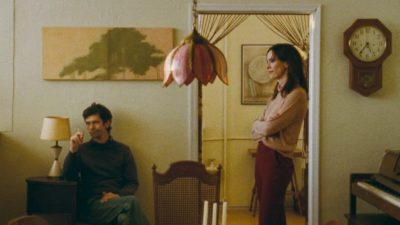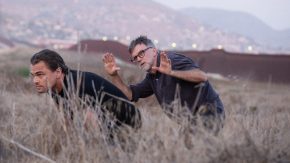Find a story that’s full of mysteries. Stick with it till you solve them all, even if this takes decades. And finally: share it with others. Music researcher János Bojti’s investigative work, spanning over forty years, is so systematic in nature, we might even call it the “Bojti Method”. Thanks to his devoted work, Mussorgsky’s reconstructed opera, Khovanshchina, can be heard for the first time, while also revealing its circuitous fate in the 20th century.
János Bojti graduated as a cellist, and after completing his military service, he studied conducting, later working at the Hungarian Radio and the record label Hungaroton. In December of 2000, he completed the reconstructed version of Khovanshchina, which can be heard for the first time ever in a concert-like performance at the opening concert of the Budapest Spring Festival. However, the completion of this grand achievement was preceded by four decades of hard work, and the passions that spurred it reach back even further.
“I’ve always been interested in the mechanism of things, in how things work. For instance, what makes a clock tick?” Bojti says, recalling the beginnings. “The creation and later life of Khovanshchina surpasses even detective novels when it comes to mystery and adventure.” His interest in clockworks, thanks to his father’s work as an extra at the opera house, soon prompted adoration for the clock scene in Boris Godunov as well as for the entire oeuvre of Modest Petrovich Mussorgsky. The Hungarian premiere of Khovanshchina in 1936 was seen only by his father, but the 1972 revival was witnessed by young Bojti (and conductor János Kovács) too. The result: love at first listen.
Starting in 1872, Mussorgsky worked on his second opera for eight years, but his death prevented him from completing it. Apart from two passages, he did no orchestration, and the manuscript of several sections has been lost. Fortunately, two Russian masters took the opera’s fate into their hands: Rimsky-Korsakov and Shostakovich each made their own version. The question thus arises: why the need for a new version? “Rimsky-Korsakov’s orchestration technique is fairly similar to that of Mussorgsky’s. His piece is beautiful, but he omitted important parts and made corrections in almost every bar. Shostakovich, on the other hand, while hardly touching actual notes, created a very singular, 20th century orchestration, which is not faithful to Mussorgsky.”
The Hungarian researcher’s task did not stop at developing (and also restoring) the orchestration, because the structural and dramaturgical unity of the piece also had to be reconstructed. And this is where the detective story – set in a Russian landscape and populated with sheet music publishers and descendants – really begins… Let’s look at an example: In 1931, Pavel Lamm published the music of Khovanshchina, based on the composer’s manuscript. In one of the key scenes of act five, Lamm refers to an alleged manuscript, but later, no trace of this could be found. As far as it is known, Rimsky-Korsakov had created his own version from this manuscript, but afterwards it disappeared. According to one conjecture, the legal successors held on to it, thus preventing Lamm’s investigative work. Lacking an autographed source, Lamm published the missing part by simplifying Rimsky-Korsakov’s version, so its authenticity is therefore questionable. This “mock-Mussorgsky scene” was later adopted by Shostakovich too. “In the meantime, the elusive manuscript had since been recovered and was published in the appendix of the 1976 revised edition of the piano reduction. This contains drafts for the finale, which can be perfectly assembled into a whole. Five years later, a study was published about the mysterious manuscript, and this is what gave me the courage to launch a reconstruction.”
According to Bojti, in order to start working on Khovanshchina, it was indispensable to know exactly what the composer was thinking and where. The extremely complex piece must be interpreted as a whole, and every nuance in it must be understood. “The conclusion that can be drawn from the earlier orchestrations is that, until now, this opera hasn’t really been understood. I had to write a whole book in order to present the meticulous care with which the composer created Khovanshchina. The plot takes place during a turning point in Russian history, which gave Mussorgsky an opportunity to present a sort of encyclopaedic summary of contemporary Russian society, the state systems, and the church.”
To date, only the prelude of this authentically reconstructed version of Khovanshchina had been performed, back in 2001, so this performance will be a world premiere. With regards to the conductor: according to Bojti, only one person could be considered. “I had no doubts, not for a moment, about the person of János Kovács. As soon as I learned that he was similarly passionate about Khovanshchina, we immediately connected, and for twenty years we have been struggling hand-in-hand to get this work presented,” says Bojti. “I trust that there will be no unpleasant surprises, even with regards to my own work.” There’s no doubt about that. After all, has Sherlock Holmes ever been known to fail at solving a mystery?
April 5 | 7 pm
Müpa Budapest – Béla Bartók National Concert Hall
Mussorgsky: Khovanshchina
The opening concert of the Budapest Spring Festival
Performed by: Evgeny Stavinsky, Misha Didyk, Mikhail Gubsky, Rassul Zharmagambetov, Alexander Markeev, Elena Maximova, Anna Shapovalova, Norbert Ernst, Éva Bátori, Zoltán Megyesi, Sándor Egri, László Szvétek, János Alagi, Róbert Rezsnyák – voice
Featuring: Hungarian Radio Symphony Orchestra, Choir (choirmaster: Zoltán Pad) and Children’s Choir (choirmaster: Soma Dinyés), Honvéd Male Choir (choirmaster: Kálmán Strausz)
Conductor: János Kovács
THE EDITOR RECOMMENDS: The Impressionist Who Made Mussorgsky’s Tableaus Famous
Yet another version of Khovanshchina exists, which has since been forgotten: Ravel, the famous French composer, was commissioned by ballet director Sergei Diaghilev to join forces with Stravinsky in order to orchestrate the opera he had supplemented and revised. This version, completed in 1913, has sunk into oblivion, but posterity has not been left without a Ravel-orchestrated Mussorgsky work, since, thanks to him, we can next hear the piano piece, Pictures at an Exhibition, in an orchestral version on 10 April, at the concert of the Alba Regia Symphony Orchestra. The concert also includes the Russian composer’s Night on the Bare Mountain, and Ravel’s Piano Concerto in G Major, the latter with soloist Dezső Ránki. Through this music, so rich in landscape, colour, and images, the audience will be guided by conductor Gergely Dubóczky, known for his attachment to the fine arts.
April 10 | 7.30 pm
Pesti Vigadó – Ceremonial Hall
Dezső Ránki (piano) and the Alba Regia Symphony Orchestra
Conductor: Gergely Dubóczky
Author: Dániel Mona
This article was originally published in the BSF Magazine.

























Comments
1 Responses to “The Sherlock Holmes of Russian Opera”